Advertisements
Advertisements
प्रश्न
Draw diagrams to show the refraction of light from
- air to glass, and
- glass to air. In each diagram, label the incident ray, refracted ray, the angle of incidence
- and the angle of refraction (r).
उत्तर
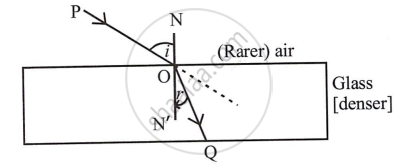
Refraction of Light:
-
The incident ray from air to glass bends towards the normal PO, or refracted ray, and the OQ, or incident ray.
- It bends away from the normal PO, incident ray, and OQ, refracted ray, as it travels from glass to air.
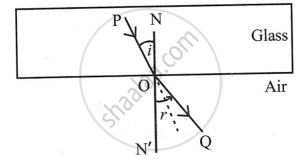
APPEARS IN
संबंधित प्रश्न
If the speed of light in vacuum is 3 × 108 ms−1, find the speed of light in a medium of absolute refractive index 1.5.
Name one factor that affects the lateral displacement of light as it passes through a rectangular glass slab.
A ray of light passes from water to air. How does the speed of light change?
Observe the following figure and answer the questions given under it:
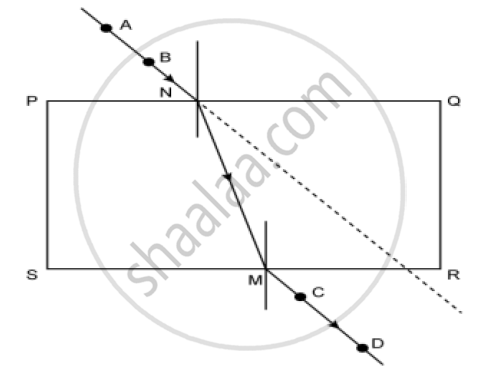
1) How many times does refraction take place in the above figure?
2) What happens to the ray of light when it passes from air to glass?
3) What happens to the ray of light when it passes from glass to air?
4) What are the rays AB and CD in the figure called?
5) Define refraction.
A monochromatic ray of light passes from air to glass. The wavelength of light in air is λ, the speed of light in air is c and in glass is V. If the absolute refractive index of glass is 1.5, write down
- the relationship between c and V,
- the wavelength of light in glass.
A ray of light passes from air to water. In fig. 39, which of the ray A, B, C and D is the correct refracted ray?
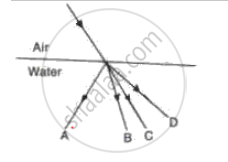
Draw a diagram to show the splitting of white light into its constituent colours.
The diagram shows the path of a ray of light through a rectangular glass block placed in a liquid of uniform density.

Show with the help of a ray diagram the path of the ray when incident ray normally falls on the first surface of the glass block and passes through the block and the liquid.
The path of a ray of light coming from air passing through a rectangular glass slab traced by four students are shown as A, B, C and D in the figure. Which one of them is correct?
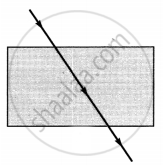 |
 |
 |
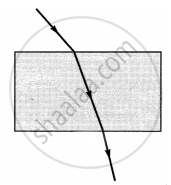 |
| A | B | C | D |
